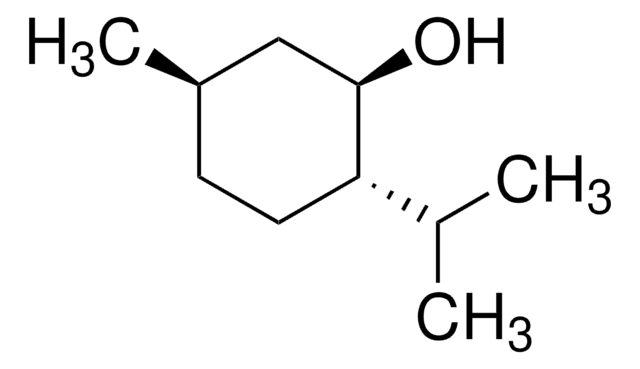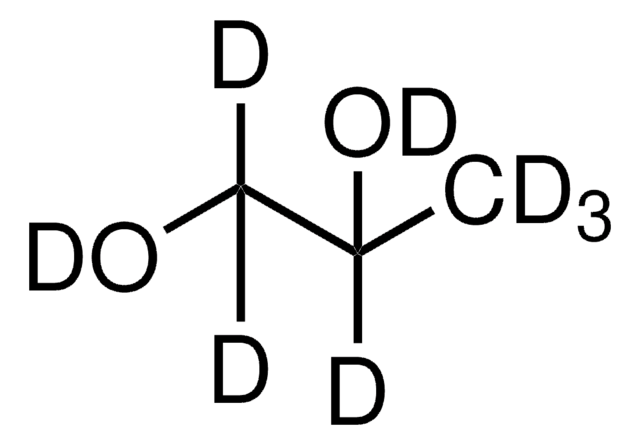PHR1045
Diethylene glycol
Pharmaceutical Secondary Standard; Certified Reference Material
Synonym(s):
DEG, 2,2′-Oxydiethanol, 2-Hydroxyethyl ether, Bis(2-hydroxyethyl) ether, Diglycol
About This Item
Recommended Products
grade
certified reference material
pharmaceutical secondary standard
Quality Level
Agency
traceable to Ph. Eur. Y0000217
traceable to USP 1193265
vapor density
2.14 (vs air)
vapor pressure
0.01 mmHg ( 20 °C)
API family
diethylene glycol
CofA
current certificate can be downloaded
autoignition temp.
442 °F
expl. lim.
2-12.3 %
technique(s)
HPLC: suitable
gas chromatography (GC): suitable
refractive index
n20/D 1.447 (lit.)
bp
245 °C (lit.)
mp
−10 °C (lit.)
density
1.118 g/mL at 25 °C (lit.)
application(s)
cleaning products
cosmetics
food and beverages
personal care
pharmaceutical (small molecule)
format
neat
storage temp.
2-30°C
SMILES string
OCCOCCO
InChI
1S/C4H10O3/c5-1-3-7-4-2-6/h5-6H,1-4H2
InChI key
MTHSVFCYNBDYFN-UHFFFAOYSA-N
Looking for similar products? Visit Product Comparison Guide
General description
Diethylene glycol is a a four carbon dimer of ethylene glycol and finds applications as antifreeze, solvent, humectant, hydraulic fluid and brake fluid. It is a potential neuro- and nephrotoxin for humans. It may also be utilized in moisturizers, lubricants, emulsification agents, additives and solvents.
Application
Analysis Note
Other Notes
Footnote
Recommended products
Application
related product
Signal Word
Warning
Hazard Statements
Precautionary Statements
Hazard Classifications
Acute Tox. 4 Oral
Storage Class Code
10 - Combustible liquids
WGK
WGK 1
Flash Point(F)
280.4 °F - closed cup
Flash Point(C)
138 °C - closed cup
Choose from one of the most recent versions:
Already Own This Product?
Find documentation for the products that you have recently purchased in the Document Library.
Customers Also Viewed
Protocols
99%; Glycerol, ≥99.5%; Tetraethylene glycol, 99%
Chromatograms
suitable for GCOur team of scientists has experience in all areas of research including Life Science, Material Science, Chemical Synthesis, Chromatography, Analytical and many others.
Contact Technical Service










